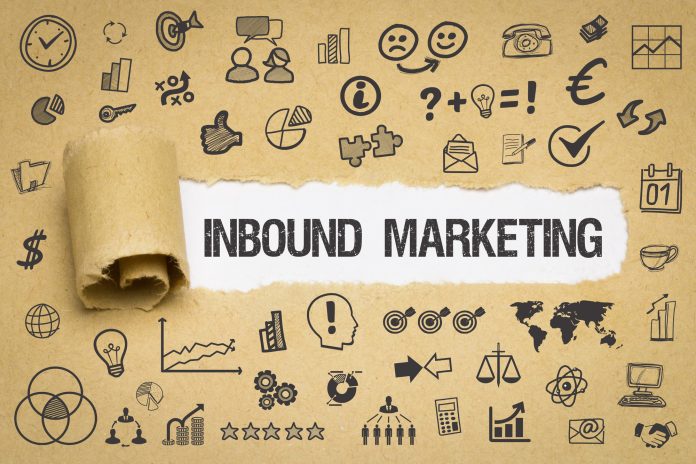Are you trying to decide between inbound vs outbound sales marketing? While both these sales methodologies affect your sales funnel, they work differently.
Outbound sales methodologies rely on out-of-agency initiatives. Cold-calling and showrooming are two examples. Inbound sales methodologies rely on in-agency customer experience and outreach.
We’re going to break down both of them below: their pros, their cons, and when to use one over the other. Read on!
Inbound Sales
Inbound sale is a strategy that aims to attract potential customers to a company’s products or services through various forms of marketing, such as:
- Content marketing
- Social media
- Search engine optimization
The goal of inbound sales is to create a relationship with potential customers and guide them through the buying process, ultimately leading to a sale.
Pros of Inbound Sales
Inbound sales can be an effective strategy for businesses to attract and convert qualified leads into customers. Here are the pros of inbound sales:
Better Qualified Leads
Inbound sales often attract leads that are already interested in your brand and have taken the initiative to engage with your content or visit your website. This means they are more likely to convert into customers.
Lower Cost
Inbound sales can be more cost-effective than outbound sales. Inbound sales rely on creating valuable content and resources to attract leads rather than actively pursuing them through advertising or cold calling.
Builds Trust
Inbound sales can help build trust and credibility with potential customers. By providing valuable content and resources, businesses can establish themselves as industry experts and build relationships with prospects.
Cons of Inbound Sales
While inbound sales can be an effective strategy for businesses, it also has its drawbacks. Here are some cons of inbound sales:
Slow to Generate Results
Inbound sales can take time to generate results as it relies on customers finding your brand and engaging with your content. It may take several months or even years to build a solid inbound sales strategy and see significant results.
Limited Control
With inbound sales, businesses have limited control over the types of leads they attract. While they can target their content and marketing efforts towards specific audiences, they have less control over who actually engages with their brand.
Requires Continuous Effort
Inbound sales require ongoing effort and investment in creating and promoting valuable content to attract and engage leads. Businesses need to consistently produce high-quality content to maintain and grow their inbound sales strategy.
Outbound Sales
Outbound sale is a strategy that focuses on reaching out to potential customers directly. It’s either through cold-calling or emailing.
The goal of outbound sales is to generate leads and close sales quickly. It targets potential customers who may not be actively seeking out a company’s products or services.
With the help of a software application, businesses are able to easily manage their outbound sales processes, track leads, follow up on leads, optimize communication techniques, and close more deals.
Fastcall salesforce lightning experience is an example of this application that provides seamless and efficient solutions for the outbound sales team looking to improve their sales strategies.
Pros of Outbound Sales
Outbound sales can be an effective strategy for businesses to reach a specific target market and generate sales. Here are the pros of outbound sales:
More Control
With outbound sales, businesses have more control over who they target and what message they deliver. This allows them to be more strategic and focused in their sales efforts.
Faster Results
Outbound sales can generate faster results than inbound sales. Through this strategy, businesses can actively pursue potential customers through cold calling, direct mail, or email campaigns.
Better Response Rates
With outbound sales, businesses can target customers who are more likely to convert into sales. This increases the likelihood of success.
Cons of Outbound Sales
Outbound sales, while effective in some cases, can also have several drawbacks. Here are some of the key cons of outbound sales:
Higher Costs
Outbound sales can be more expensive than inbound sales. It often involves purchasing lead lists or advertising to reach potential customers.
Low Conversion Rates
Outbound sales can have lower conversion rates. The approach can be perceived as intrusive and pushy by potential customers.
Can Damage Reputation
Poorly executed outbound sales campaigns can damage a business’s reputation. They may be perceived as spammy or unwanted by potential customers.
Choosing the Right Sales Strategy
Ultimately, the decision of whether to use inbound vs outbound sales will depend on a variety of factors. This includes the company’s goals, target market, and available resources. Here are some tips for choosing the right sales strategy:
Consider Your Target Market
If your target market is highly engaged on social media and other online platforms, inbound sales may be the best approach. However, if your target market is less active online, outbound sales may be a better choice.
Evaluate Your Resources
Inbound sales require a significant investment in time and resources to create high-quality content and marketing materials. If your company has limited resources, outbound sales may be a better choice.
Set Your Goals
If your goal is to generate immediate sales, outbound sales may be the best approach. However, if your goal is to build long-term relationships with potential customers, inbound sales may be a better choice.
Test and Iterate
Both inbound and outbound sales require ongoing testing and iteration to optimize results. Be sure to measure the effectiveness of your sales efforts and adjust your strategy as needed.
Combine Approaches
In some cases, it may be beneficial to use a combination of inbound and outbound sales. For example, you could use inbound sales to attract potential customers to your website and then use outbound sales to follow up with them and close the sale.
Focus On Customer Experience
Regardless of which sales strategy you choose, it’s important to prioritize the customer experience. Make sure your sales efforts are tailored to the needs and preferences of your target audience, and focus on building relationships that can lead to long-term customer loyalty.
Inbound vs Outbound Sales Sales Teams
Inbound vs outbound sales is an important topic to understand, as your approach will have an effect on the efficiency of your sales strategies. For businesses wishing to maximize their sales efforts, understanding and utilizing elements from both sales strategies may be of benefit. Try making the switch today- you won’t regret it!
For more helpful articles, check out the rest of our website.

